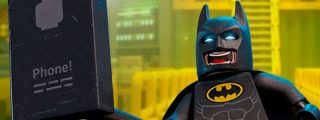The year is 2016. Nintendo, after years of ignoring the franchise, has announced its first Metroid title since the disastrous Other M, Metroid Prime: Federation Force. Fans everywhere collectively lit a candle and spilled some of their drink on the pavement to pay respects to the beloved franchise. But despite Federation Force’s best efforts, Metroid was not dead, and at E3 2017 a new Metroid Prime title was announced alongside a lower key 3DS announcement with the none too subtle name of Metroid: Samus Returns. It is not exactly a new game, rather it is a remake of what was probably the least popular of the old 2D games released on a dying system (joke’s on you Nintendo, I’d consider buying a Switch for a new Metroid) but once the game boots up and you are alone in the giant maze that is the Planet SR3888, fans will be greeted by the same great gameplay Metroid fans have been craving for so long.
Metroid: Samus Returns takes place after the original game. The nebulous “Federation”, now elucidated of the threat metroids pose, they have hired Samus’ services as an exterminator to destroy the metroid threat. Samus then flies down to the planet, gets a list of metroids, and gets to work on killing them, and any other living thing she comes across. Having learned their lesson from the failed experiment of Other M years prior, the story is kept to a minimum, with the exception of a few cutscenes, the game focuses primarily on gameplay.

This was clearly the correct course of action for the series. But Nintendo didn’t just stick 3D models into Metroid II and called it a remake. They remade the game from the ground up. This adds new powers,a major overhaul to the map, and necessary quality of life improvements that have become staples to the series, and powers and abilities that are brand new to the series. The most obvious change is the addition of a parry system that allows Samus to counter attacks from enemies with a well-timed press of a button. To pair with this addition, enemies also have a charge attack added to their tool kit. While parrying does yield more aeon and health, you don’t have to do this to progress to them game. Ultimately the move is a good addition that also makes boss fights more fun.
Staples of the Metroid series that were not present in Metroid II have been included in Return of Samus. Items such as super missiles and Power bombs, as well as powers like the space jump. Techniques such as morph ball jumping with bombs make a return as well, though with new capabilities for the morph ball they might feel a bit redundant. Still there are some new techniques that the new moves make possible, that will be sure to help speed runners shave hours off of their times.

New to the series are Aeon abilities, four powerful abilities that consume energy from the new Aeon gauge. There are four of these powers are incredibly useful and add a new dimension to the game. While I believe that it is a bit of a spoiler to reveal all of the powers and items that Samus will have access to during a Metroid game (they are, after all, the tools you will use to open more paths and figuring out what you get and how it will help you navigate is one of the most satisfying parts of the genres); however, I feel that I have to mention the new scanner. When pressing A, a ping similar to a sonar will reveal the map around you, while making noise if there are blocks in the area that can be destroyed.
It takes a lot of the guess work out of the game, as many times Metroid games tend to hit a wall where the player will just randomly shoot at the levels with all their available weapons in the hope of figuring out what they need to do. Even games like Metroid Fusion, one of most linear of the series, had moments when the player had a good chance of being in a situation where shooting at infrastructure seems like the only way to progress. There are also teleporters around the planet. The purist in me felt that this is against the spirit of the game, however, I have to admit that while don’t feel necessary in all instances, they still do a lot to cut out some of the tedium that back tracking causes. It is a good addition.
Not everything is perfect about the game, and while it has made huge strides in addressing issues it inherited from the game it is based off of, it still falls for some of the series’ longstanding pitfalls, and for some new ones of its own creation. The path through the game is fairly linear. While you can and should go back to get upgrades, it is very possible to finish the game with almost no backtracking if so desired. There is also a strange pacing to how the powers are acquired. There are a few stretches where it seems that you acquire two or three at once, followed by long periods with no new powers.

Perhaps the bigger problem that I have with the game is the low number of meaningful boss fights. There are really only a four real bosses in the game and three of them come in the later hours of the game. Instead of this the game has you fight the 40 metroids in your hit list. These fights are tough, especially at the beginning, but there only about five different type of metroid, which means you will fight each of them four times or more. Efforts were made to keep these fights from becoming stale, such as adding complications to the venue, and even a mechanic that I will not spoil, but which I am sure will do more to enrage players than to delight them.
These flaws are very minor, and they have done nothing to diminish the enjoyment I got out of this game. It is very much exactly what I wanted from a new(?) Metroid. It has amazing level design that encourages exploration while also keeping the game moving, and reducing the down time that causes many of the games in the genre to be overlooked. At the same time, it does leave room for the creative speed running that has given games like Super Metroid so much longevity. The focus on gameplay, and the reduction of story to what amounts to just a few brief cut scenes to add a greater focus to the gameplay is a design decision that has really paid off. It is a fantastic reconstruction of an overlooked classic game that fits modern sensibilities while at the same time keeping the core gameplay and concepts from the original, and a must have for any fan of Metroid, or 2D platformers.




